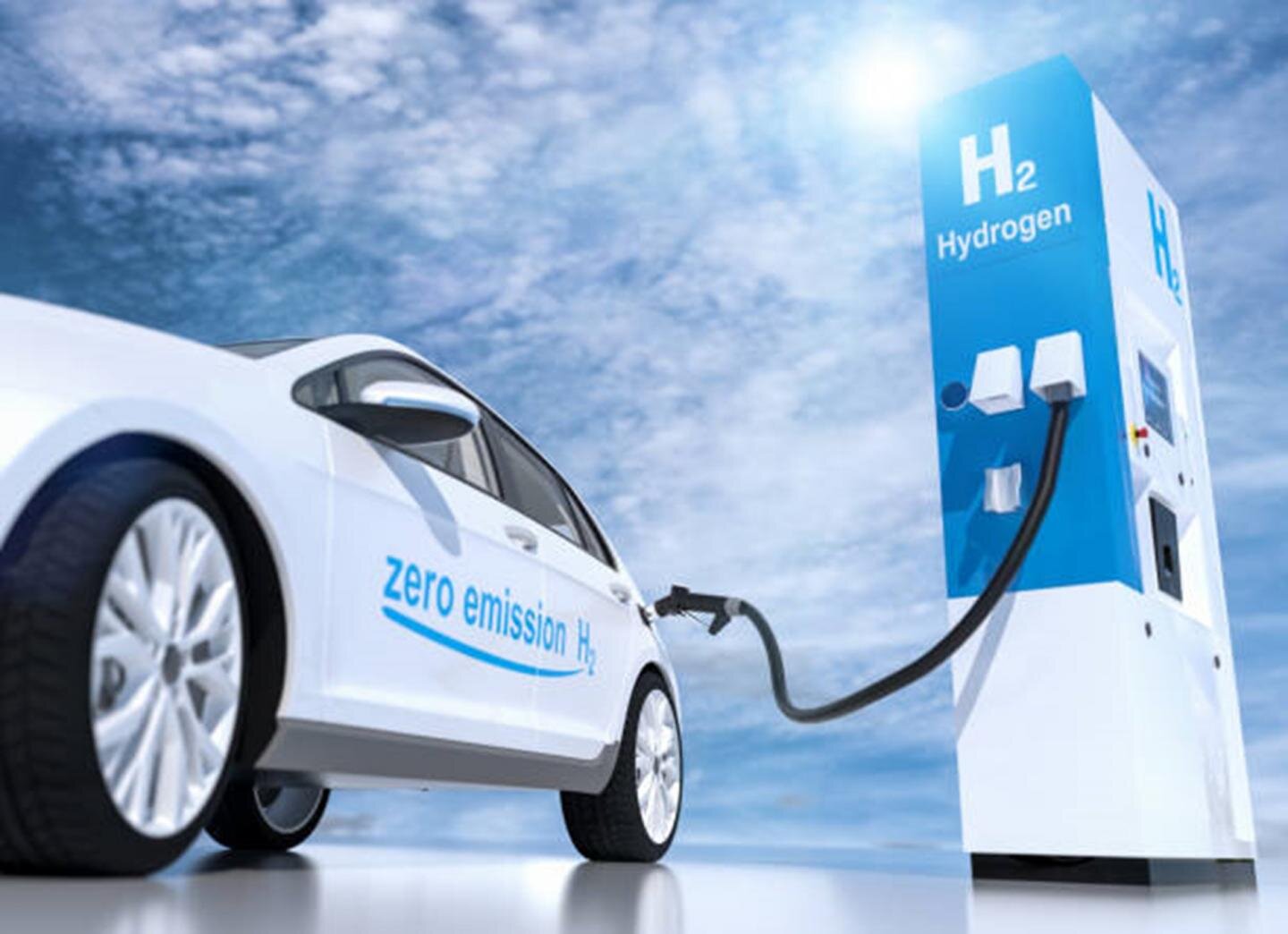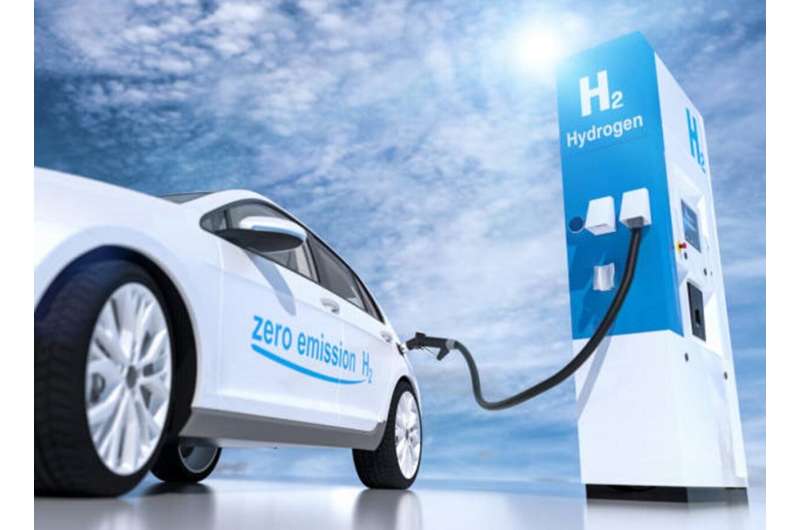#Novel two-polymer membrane boosts hydrogen fuel cell performance

“#Novel two-polymer membrane boosts hydrogen fuel cell performance”

A considerable portion of the efforts to realize a sustainable world has gone into developing hydrogen fuel cells so that a hydrogen economy can be achieved. Fuel cells have distinctive advantages: high energy-conversion efficiencies (up to 70%) and a clean by-product, water. In the past decade, anion exchange membrane fuel cells (AEMFC), which convert chemical energy to electrical energy via the transport of negatively charged ions (anions) through a membrane, have received attention due to their low-cost and relative environment friendliness compared to other types of fuel cells. But while inexpensive, AEMFCs suffer from several major drawbacks such as low ion conductivity, low chemical stability of the membrane, and an overall lower performance rate than its counterparts. Now, in a study published in the Journal of Materials Chemistry A, scientists from Korea report a novel membrane that is both thin and strong, and takes care of these drawbacks.
To develop their membrane, the scientists used a novel method: they chemically bonded two commercially available polymers, poly(2,6-dimethyl-1,4-phenylene oxide) (PPO) and poly(styrene-b-(ethylene-co-butylene)-b-styrene) (SEBS) without using a crosslinking agent. Professor Tae-Hyun Kim from Incheon National University, who led the study, explains, “A previous study made a similar attempt to fabricate anion exchange membranes (AEMs) by crosslinking PPO and SEBS with diamine as a crosslinking agent. While the AEMs displayed excellent mechanical stability, the use of diamine could have led to different reactions other than those between PPO and SEBS, which made it difficult to control the properties of the resultant membrane. Therefore, in our study, we crosslinked PPO and SEBS without any crosslinking agent to ensure that only PPO and SEBS react with each other.” The strategy used by Prof. Kim’s team also involved adding a compound called triazole to PPO to increase the membrane’s ion conductivity.
Membranes fabricated using this method were up to 10 μm thin and had excellent mechanical strength, chemical stability, and conductivity at even a 95% room humidity. Together, these conferred a high overall performance to the membrane and to the corresponding fuel cell on which the scientists tested their membrane. When operated at 60°C, this fuel cell exhibited stable performance for 300 hours with a maximum power density surpassing those of existing commercial AEMs and matching cutting-edge ones.

Excited about the future prospects of this novel promising AEM, Prof. Kim says, “The polymer electrolyte membranes in our study can be applied not only to fuel cells that generate energy, but also to water electrolysis technology that produces hydrogen. Therefore, I believe this research will play a vital role in revitalizing the domestic hydrogen economy.”
Perhaps that clean and green world we envision is not far away!
Effects of crosslinker length on anion exchange membrane fuel cells
Seounghwa Sung et al, Preparation of crosslinker-free anion exchange membranes with excellent physicochemical and electrochemical properties based on crosslinked PPO-SEBS, Journal of Materials Chemistry A (2020). DOI: 10.1039/d0ta10194j
Provided by
Incheon National University
Citation:
Novel two-polymer membrane boosts hydrogen fuel cell performance (2021, February 17)
retrieved 17 February 2021
from https://phys.org/news/2021-02-two-polymer-membrane-boosts-hydrogen-fuel.html
This document is subject to copyright. Apart from any fair dealing for the purpose of private study or research, no
part may be reproduced without the written permission. The content is provided for information purposes only.
If you liked the article, do not forget to share it with your friends. Follow us on Google News too, click on the star and choose us from your favorites.
For forums sites go to Forum.BuradaBiliyorum.Com
If you want to read more Like this articles, you can visit our Science category.




